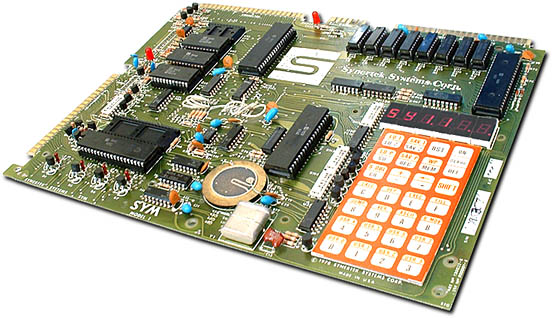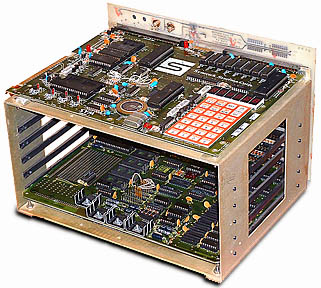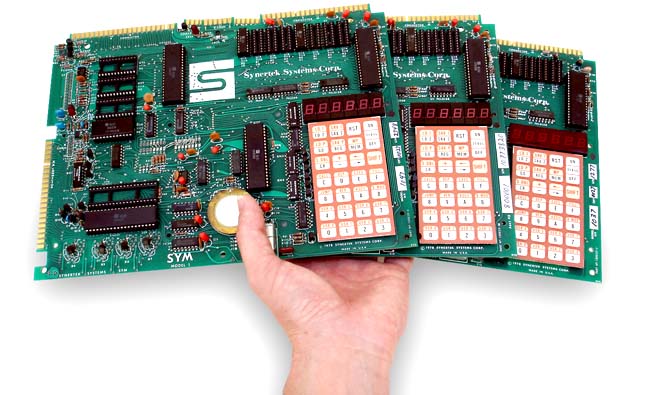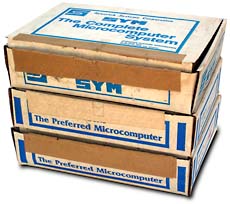I worked on software for the SYM-1 project, and I can add some details.
The software was written by Nelson Edwards and students in Walla
Walla. They hand-assembled the 6502 code.
There was an option to have the SYM-1 with Microsoft Basic. Bill Gates himself came to see us and
provided the Basic. He was arrogant, baby-faced, and he wrote buggy code, then refused to believe
that it didn't work.
I think that he assembled it with macros in a PDP-10 assembler. We would provide him with hardware
specs, he would customize Basic, send us the code, we would burn an EPROM, and it wouldn't work.
"That's impossible!", he would say, despite the fact that he didn't have the hardware, so he
hadn't tested it.
|



 This particular SYM-1 has an expansion chassis with 5 additional slots for expansion cards.
This particular SYM-1 has an expansion chassis with 5 additional slots for expansion cards.


